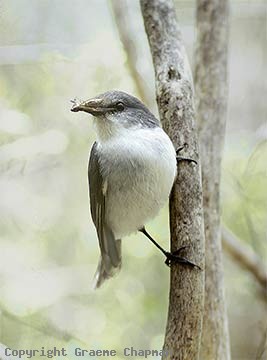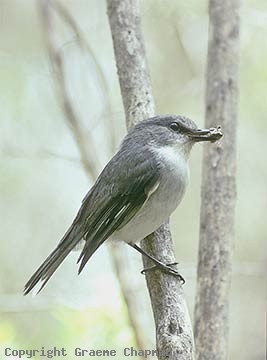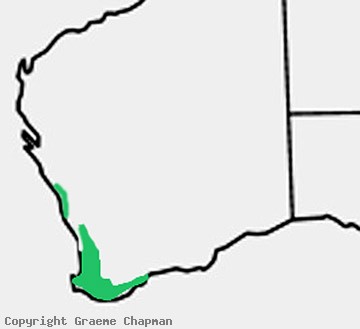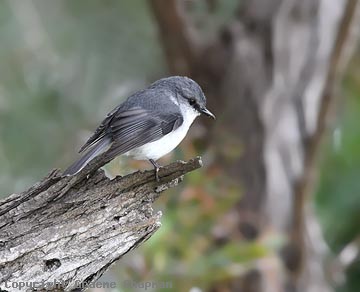Australian BirdsWhite-breasted Robin
|
White-breasted Robins inhabit the forests of far south-western W.A., particularly the dense shrubbery bordering creek-lines and other wet places. They also extend northwards in a narrow band of coastal acacia thickets from Lancelin, just north of Perth to the vicinity of Geraldton. They are fairly quiet little birds that feed mainly on the ground in amongst the thickets and can easily be overlooked because they lack the loud piping calls of the Yellow Robins.
The life history of White-breasted Robins is one of the most well-known of all Australian birds, thanks to an intense, long-term colour-banding study carried out near Manjimup in the 1970's and 1980's. White-breasted Robins breed cooperatively with nearly two thirds of groups including one or more helpers as well as the breeding pair. These helpers were mainly males and assisted the senior male to feed the female on the nest as well as feeding the young and defending the territory.Breeding territories and groups persisted from year to year, although in the non-breeding season males ranged more widely. Divorce was rare; breeding males that disappeared were replaced by a helper from within the group if one was present but females were replaced from outside the group. Several clutches may be laid, between July and December, mostly of two eggs. The eggs took 16-17 days to hatch and nestlings fledged 13-14 days later. The most productive groups were those with two or more helpers on high-quality territories. |

387201 ... White-breasted Robin. |

387202 ... White-breasted Robin |

387204 ... White-breasted robin |

387205-D ... White-breasted Robin |
